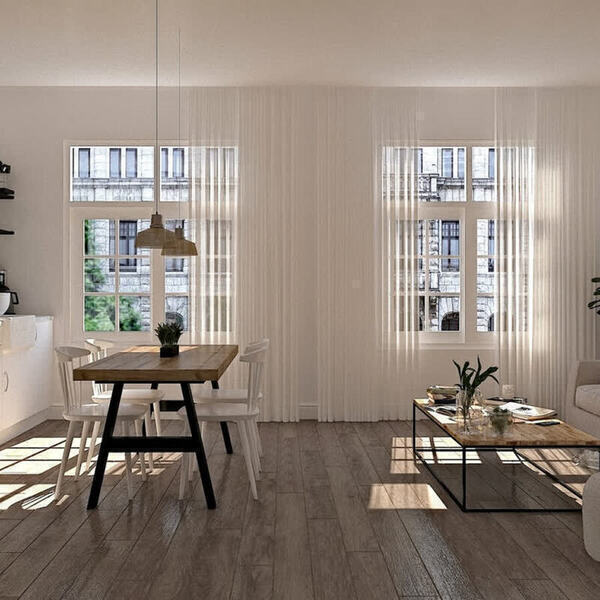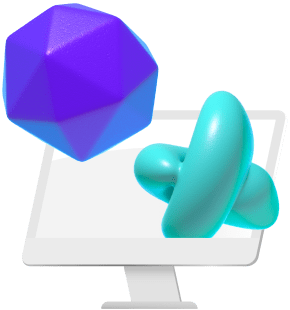Today more than ever the evolution towards the virtual world has led to the development of software and professionally qualified figures able to make the most of the great potential of this new vision of architecture. More and more architecture and interior design studios have specialized in the creation of models and 3D renderings of interiors and exteriors.
The use of 3D rendering is a technique that allows you to visualize a project in three dimensions through a realistic reproduction that is as faithful to reality as possible. The fields of application are many, think for example the design of custom-made furniture.
Once an architectural project has been created and a 3D model has been sketched, the render allows you to view the result in three dimensions. Using the render it is possible to insert materials, textures, lights, and many other elements to visualize your project and, why not, give greater prominence to the design choices.

Photo by Alberto Castillo Q. on Unsplash
But that’s not all! It is also a real help for planners, who with this tool can convey their ideas directly to clients. Just think of the convenience of showing a project idea to your customers who, through rendering technology, will be able to see with their own eyes and understand the various steps of the project. And above all, have a clear idea of what the final result will be.
In this guide, we will talk about how rendering has impacted the world of Design and Architecture. Furthermore, if you are a professional, a designer, or a simple enthusiast, you will find some tips for rendering at the highest level and a complete list of the best rendering programs for architecture to choose from.
Blender (Windows/macOS/Linux)
The first software that I suggest you consider, as far as three-dimensional modeling is concerned, is Blender. It is, according to many, among the best free rendering programs. It is compatible with Windows, macOS, and Linux and is open source.
It can be used to create 3D animations, games, and graphics for use in other projects. It offers different 3D models of objects and allows you to apply a wide range of effects to your creations.
Blender is among the most popular products currently in existence, the best open-source alternative to programs for creating photorealistic renderings, if you don’t have the opportunity or don’t want to resort to paid software. This program allows not only three-dimensional modeling but, as is also the case with paid software, allows you to work on advanced rendering, animation, and visualization composition.
An excellent program, therefore, which unfortunately is rather difficult for a novice designer. Usability is not the best and understanding all its features for its professional use is not immediate.
What we like
Open-source free software
What we don’t like
No the most user-friendly in terms of usability

Rhinoceros (Windows/macOS)
Also known to most as Rhino or Rhino 3D, it is a 3D CAD modeling solution that allows you to model objects with precision, in such a way as to be instantly ready for animation, representation, design, engineering, production, and analysis. It isn’t free (it costs 995 euros), but you can try it with no expenses for 90 days. If the license is not purchased, the program continues to work, but the options for saving and plug-ins are disabled.
The difference between Rhinoceros and the other programs is in the methodology with which the software processes the volumes, i.e. through the union of free-form NURBS surfaces.
The professionals who choose it work in various sectors such as engineering, architecture, or industrial design.
What we like
Relatively easy to learn. Lots of options to view your work, easy to manipulate, and has a simple clean user interface.
What we don’t like
It’s heavy software and large files can be slow to work on.

Lumion (Windows)
Useful for the construction and architecture industries, since it performs its best in visualizing BIM and CAD projects. It also guarantees high-quality 3D videos and panoramas in virtual reality.
It features a relatively easy and intuitive interface to use. It is important to underline how Lumion does not create 3D models but makes up for this lack thanks to its full compatibility with all other 3D modeling software such as Revit, Archicad, SketchUp Pro, and Autocad.
Some of the features that distinguish Lumion are atmospheric settings, realistic materials, one-touch scene creation and save groups.
What we like
With Lumion it is possible to create very high-quality photorealistic renderings, 3D videos, and VR panoramas in near real-time, with impressive speed and simplicity.
What we don’t like
Lumion needs a lot of computing power, and medium-large projects can already feel heavy on some computers. Lumion is also quite expensive.

Revit (Windows)
Revit, which works in the BIM field, goes from the design of the building to the structural and detail element, such as a handle, or a piece of furniture. It’s software that allows users to design structures, buildings, and their components in 3D, annotate the model with 2D drawing elements, and access building information from the database.
Considered one of the most powerful rendering engines on the market, the use of Revit allows more experienced users to create fantastic 3D visualizations, and it is certainly one of the most advanced architectural 3D rendering programs.
Revit doesn’t need additional rendering engines to create a final render but has an integrated engine that offers realistic 3D views. Despite this, to get even better and truer renderings, an advanced user might want to export the images to another software, such as Cinema 4D, which will only take care of post-production.
What we like
Revit is fully parametric and widely implemented across the whole industry.
What we don’t like
It’s available only for Windows (although it’s possible to run it on Mac with good results), refit is also very expensive and can be hard to learn from scratches.

Conclusion
These are just some of the modeling and rendering software out there. Choosing one software over another must be determined by needs, expectations, and the result we are trying to obtain.
Keep in mind that most of the 3D rendering software requires computers capable of processing large amounts of information, not everyone has the budget for this type of machine. Subscribing to Vagon makes it possible to use these software even if your computer doesn’t quite meet the system requirements!




